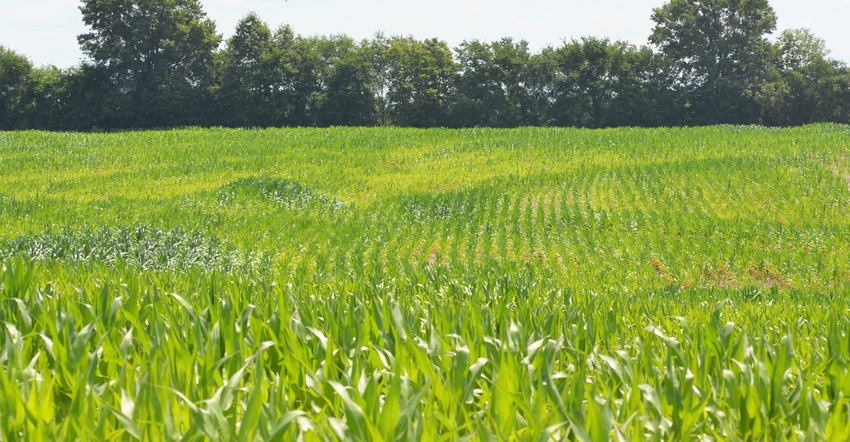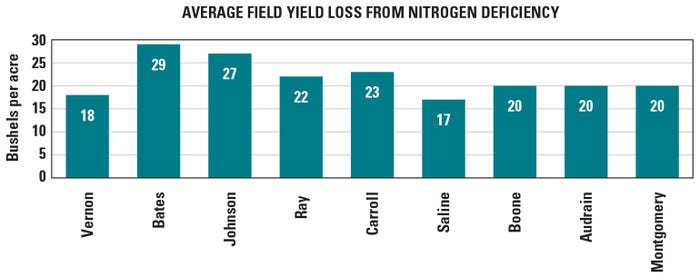
Half of Missouri’s cornfields are in the danger zone for nitrogen loss.
Peter Scharf, University of Missouri Extension nutrient management specialist, says corn farmers should brace for yield losses this harvest. Many fields looked fine from aerial photos until recently, he explains in a recent MU Integrated Pest Management newsletter.
But in the last days of July into early August, there was a shift. Nitrogen deficiency became visible in many fields across the state, showing up as a light yellow on satellite maps.
Nitrogen loss happened late this year, Scharf explains. The worst areas affected are counties just north of Interstate 70. This area received anywhere from 5 to 15 inches of rain in a two-week period in late June. Most of this rain came slowly, soaking into the soil where the nitrogen was, Scharf says.
“At the time this happened, most or all leaves were already made on corn planted in April,” he explains. “I didn't see much sign of N deficiency showing up in satellite images in early July, but I heard some reports of N deficiency showing up on lower leaves. This is pretty much what I'd expect if N was lost after the top leaves were mostly formed.”
Scharf adds nitrogen disappears fastest when soils are both warm and wet, which was the case over the last two weeks of June. Some of the fields with deficiency showing seemed to be planted in April, but the deficiency took a while to become visible at the top of the plant, he notes.
Others were late-planted corn, and the deficiency showed as the leaves developed. These later-planted fields suffered the most nitrogen loss, Scharf says, because the plants pumping out the excess water were small, and the fields were wet to start.
Analysis of nitrogen in the crop
Scharf looked at aerial imagery from nine locations to predict potential yield loss because of nitrogen deficiency during the 2021 growing season. The prediction is based on an analysis of yield loss vs. corn color in satellite images from fields in past years.

Waiting game on yield
It is likely too late to do anything now to help yield recovery in fields with nitrogen deficiency. However, some farmers chose to topdress or sidedress corn with nitrogen. That, Scharf says, will likely save some yield and keep the corn crop in “good shape.”
For those corn growers who planted late, saw heavy rains and did not apply additional nitrogen, it is a waiting game. Only at harvest will they see what, if any, yield loss occurred because of nitrogen deficiency.
About the Author(s)
You May Also Like






